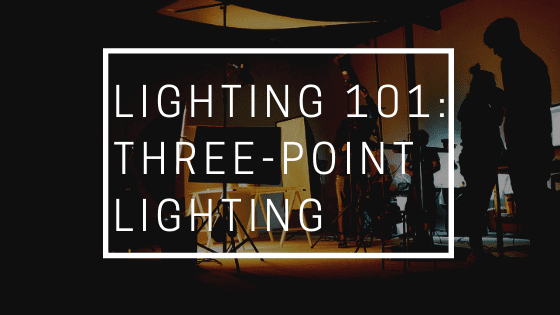
When an individual first start learning about lighting techniques, one of the first lessons they’ll learn will be about three-point lighting. By implementing this technique, they can take their video (or photo) shoot from an amateur level to a professional level. The thing is though, they can’t just set up three different lights anywhere around the on-scene subject and call it good, they need a little more instruction.
The three different lights consist of the key, fill and back light. As a video production company that shoots professional-grade videos, we understand the importance of the proper use of these three lights. We’ll expand on the role of each of these lights and how you can use them appropriately.
Key Light
As you may expect, there is a light that is going to act as the primary light to brighten up the subject of the shot, and this main light is known as the key light. However, this light doesn’t sit on top of or right next to the camera, but is placed off a ways to the right or left side of the camera — sometimes at a 45° angle. Amateurs may bring a light to their shoot but may not understand that a key light on its own might overexpose the shot. Video production companies and other professionals know that they need another light or two to balance out their shot.
Fill Light
The way professionals and video production companies control the effect of the lighting is by adding a fill light to the shot. In comparison, a fill light is much dimmer than the key light but it lightens up the shaded areas that are created by the key light. When you shoot with a key light and no fill light, you encounter harsh shadows that will oftentimes darken one side of a person’s face or other areas of a different subject. With a fill light placed on the other side of the camera (opposite of the key light), you can brighten up those shaded parts. Depending on how bright or dim you want the fill light, you ultimately control how soft or harsh the shadows will be.
Back Light
The two lights already mentioned really control how a subject appears behind the camera, but the third light, the back light, adds one extra dimension that completes the shot as a whole. This back light, also known as the rim light or hair light, is usually placed behind the subject but raised up above the camera’s view, casting light down from above the shot. Sometimes, video production companies and other professionals substitute the back light with the sun but then use a reflector or foam board to decrease the sun’s intensity. With light coming from above, there is more depth to the shot and the subject will look less two-dimensional.
Whether your a professional that works with a video production company or an individual with zero shooting experience, everyone understands that lighting enhances a shot. However, without three-point lighting, the end result will be missing that much-needed professional level. For any help with creating a professional video for your company, contact us today.


